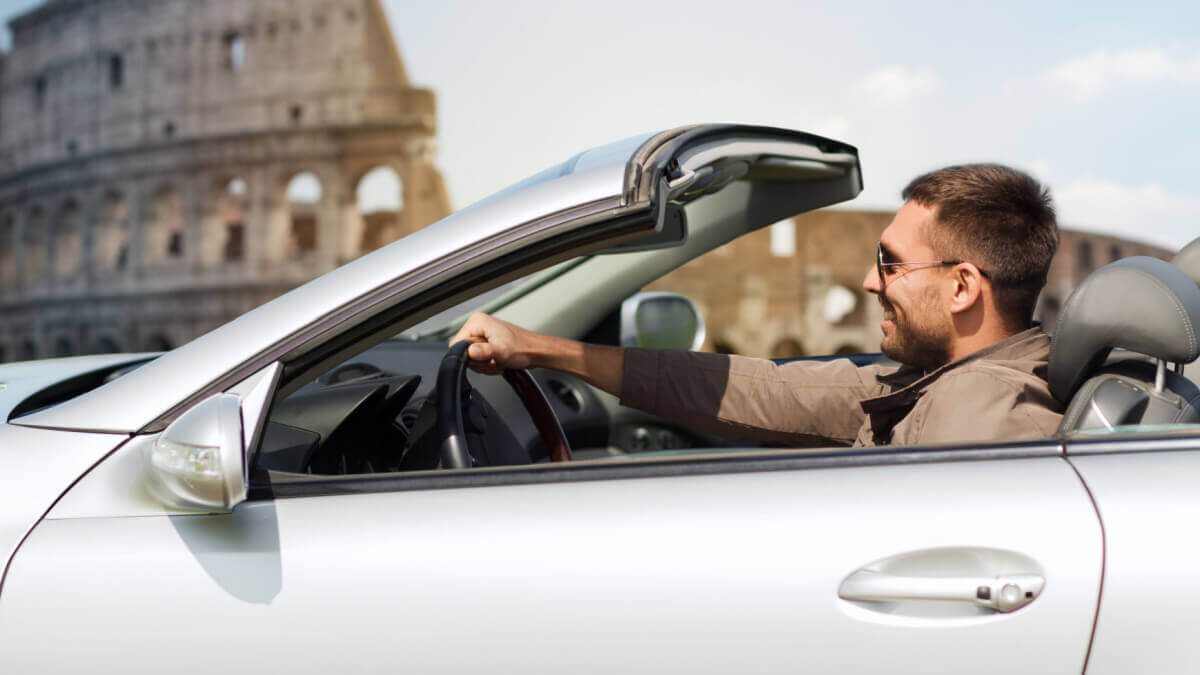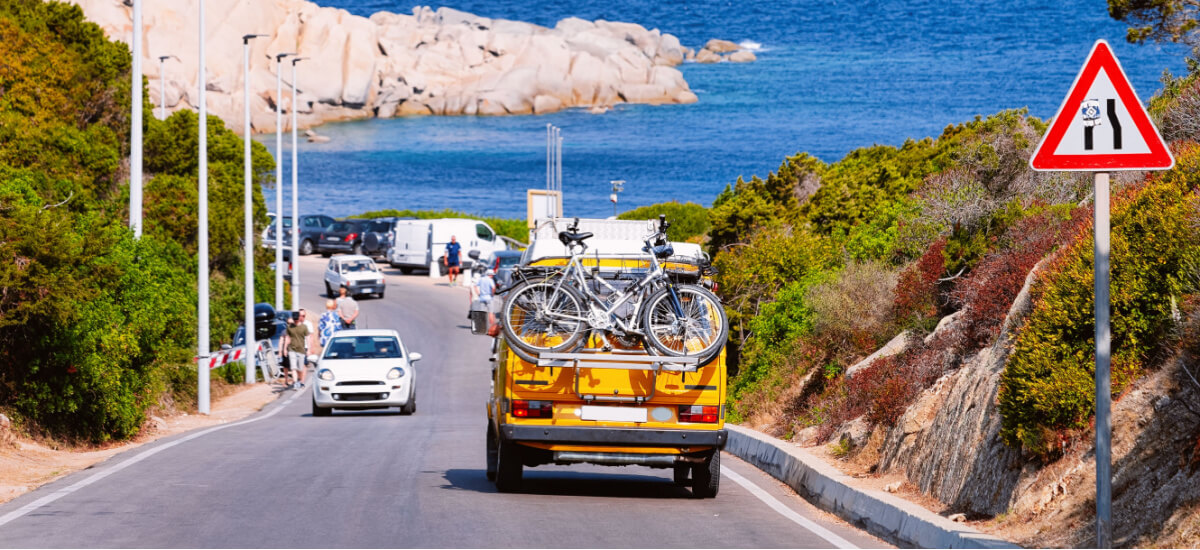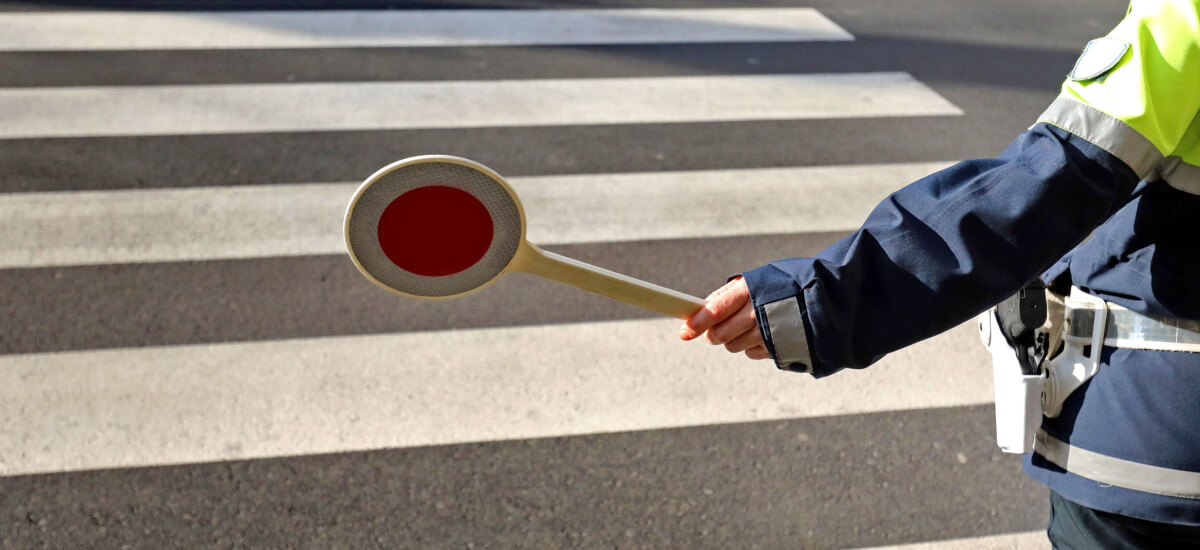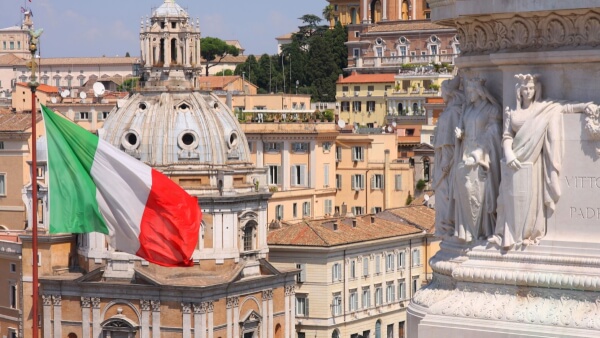ATMs in Italy: locations, fees, and tips (2025)
Read our essential guide to ATMs in Italy, including how to find them, fees, exchange rates, withdrawal limits and more.

Planning on driving through Italy anytime soon? Even though other modes of transport have their perks, being behind the wheel is an experience in itself. In order to fully enjoy your time, it’s good to know a thing or two about Italian traffic.
In this guide, we’ll cover everything you need to know about driving in Italy. This includes driving rules in Italy, the recognition of your UK driving licence and the requirements drivers must meet.
We’ll also show you a cost-effective way to handle your finances across borders from the money services provider Wise. The Wise account allows you to send money between the UK and Italy. You can even rely on the Wise card to help you handle all of your driving-related expenses abroad while avoiding high currency exchange fees.
Please see the Terms of Use for your region or visit Wise fees & pricing for the most up-to-date information on pricing and fees.
Read on to find out what’s waiting for you on the Italian roads.
| Table of contents |
|---|
In order to drive in Italy, you must be at least 18 years old. Besides your driving licence, there are some additional documents you should have on you. The first and most important one is certainly your passport, as proof of identity.¹
If you plan on driving your UK car, you’ll need your V5 log book, proof of vehicle insurance and MOT certificate. UK cars can legally be on Italian territory for up to 12 months.² Also, all British cars must have a UK sticker displayed on the back. Keep in mind that old GB stickers are no longer valid. Stickers or badges with English, Scottish or Welsh flags won’t be accepted either.
When it comes to items you should carry in your car while driving in Italy, there’s a few that are required. If you’re caught driving without them, you can expect a hefty fine. Make sure you have a reflective jacket and warning triangle at all times, as well as headlamp beam deflectors. Some recommended items include a first-aid kit and spare lightbulbs, just in case.¹
Luckily, Italy recognises UK driving licences. If you’re just a tourist, driving in Italy with a UK licence is completely legal, as long as you have the additional documents we already mentioned.³
However, if you plan on extending your stay and moving to Italy, you’ll have to exchange your UK licence for an Italian one. You can do so within a year of becoming a resident. This also applies to licences issued in Gibraltar, Isle of Man, Jersey and Guernsey. Thanks to the Agreement between the UK and Italian governments, you won’t have to retake any driving tests.⁴
Also, you won’t be able to use your International Driving Permit to avoid getting an Italian driving licence.⁴

Remembering all of the requirements and the rules can be overwhelming. You just focus on planning your trip and we’ll help you with a short reminder. Here’s everything to remember about driving in Italy checklist-style:
All of the required and recommended items for driving in Italy can be bought in a bundle. The driving kit for Italy is the same as the one for most European countries. You can get good driving kits from motoring companies such as RAC.
| 📚 Read more: Best debit card to use abroad: Top 6 UK picks |
|---|
Italian driving rules are mainly the same as the ones all over Europe. Still, it’s good to know the key differences and important regulations before getting behind the wheel.
If you’ve never driven outside the UK, this will probably be the biggest challenge. Italians drive on the right side of the road, just like most Europeans do. This affects some other rules as well.
The vehicles coming from your right always have the right of way. The exceptions are emergency vehicles or trams, since they have priority over everything. These rules apply if there aren’t any traffic signs saying otherwise.
Since a significant part of Italian territory is covered by mountains, you might find yourself driving on a steep road. If you and another car come to a narrow point, the one going downhill should reverse and let the other one pass.
Being unaware of ZTL or Zona a Traffico Limitato is one of the most common reasons foreigners get fined when driving in Italy. These zones can be found in the centres of some Italian cities and the traffic in them is restricted. Although they don’t exist throughout the whole country, the majority of big tourist spots have them.
The entrance to a ZTL is always clearly marked by a white circle with a red border. Not every ZTL has the same rules, so make sure you read the instructions under the sign. Even if you see people driving in these zones, they are most likely residents who are allowed to do so, so don’t make the mistake of entering.
The security cameras register the licence plates of all cars entering the ZTL and the fines go up to 300 EUR. On top of that, if you’re renting a car, you’ll even get an additional fine from your car rental supplier.
Make sure you look up the locations of ZTLs beforehand, since being a foreigner won’t get you out of a fine.

The speed limits in Italy are shown in kilometres per hour. In built-up areas, the upper limit is anywhere from 50 to 70 km/h, depending on the surroundings and road type. Keep an eye on the signs to know the exact number. The limit outside built-up areas is from 90 to 110 km/h. Lastly, you can drive up to 130 km/h on motorways.
Speeding tickets depend on several factors, such as the severity of the offence and the type of road you’re on. Being an unsafe driver can set you back up to 4,400 EUR, so make sure you follow the rules.²
Another Italian traffic rule is to always park on the right side of the road. This way you’ll be parking with the traffic flow. However, you can park on the left in one-way streets, but only if they’re wider than three metres.
Besides the areas marked by ‘no parking’ signs, there are a few more you should avoid. You shouldn’t park on a bus stop, a loading area, a road junction or a bend in the road.
Parking is not always free in Italy. If you see blue road signs, know you’re in an area where you must pay for parking. Those zones always have parking meters or machines where you can get tickets.²
The tolls on Italian motorways depend on the length of the motorway you’ve used. You can pay them with standard methods, cash or card, but also with a Telepass.
A Telepass is an electronic device which allows you to avoid queues at the toll booths. Those who have it can use special lanes and they don’t have to stop to pay. The device is fixed to your windscreen and it’s a great time saver.
Need help managing your driving expenses in Italy? You might want to consider options other than your bank.
Wise is a money services provider specialising in international transfers, along with a powerful multi-currency account and international debit card.
Open a Wise account and you can manage your money in 40+ currencies, including GBP and EUR. You can also make international payments for low fees* and mid-market exchange rates.
You can also get a Wise card and spend like a local from the moment you arrive in Italy. The Wise card has no foreign transaction fees for spending abroad, just a small conversion fee* when spending cross currency, so paying for gas or car repairs won’t break the bank. It also allows you to withdraw up to £200 per month with up to 2 transactions from overseas ATMs with no Wise fees (although ATM operators may charge their own fees).
Sources used:
Sources last checked on: 05-Nov-2023
*Please see terms of use and product availability for your region or visit Wise fees and pricing for the most up to date pricing and fee information.
This publication is provided for general information purposes and does not constitute legal, tax or other professional advice from Wise Payments Limited or its subsidiaries and its affiliates, and it is not intended as a substitute for obtaining advice from a financial advisor or any other professional.
We make no representations, warranties or guarantees, whether expressed or implied, that the content in the publication is accurate, complete or up to date.

Read our essential guide to ATMs in Italy, including how to find them, fees, exchange rates, withdrawal limits and more.

Italy is just a flight away. Learn how to shop tax-free at Gucci and many other stores, and obtain a VAT refund in cities like Rome, Milan, and Florence.

Read our complete guide to the Italy digital nomad visa, covering fees, documents, eligibility requirements and how to apply.

Planning a trip to Italy? From eligibility to the necessary paperwork, here's a comprehensive guide on how to apply for an Italian Schengen visa from the UK.

Travelling to Venice soon? Find out everything about the Venice tourist tax and essential travel tips.

Check out our in-depth guide on everything you need to know about buying a prepaid Italy SIM card, including different providers, pricing, and features.